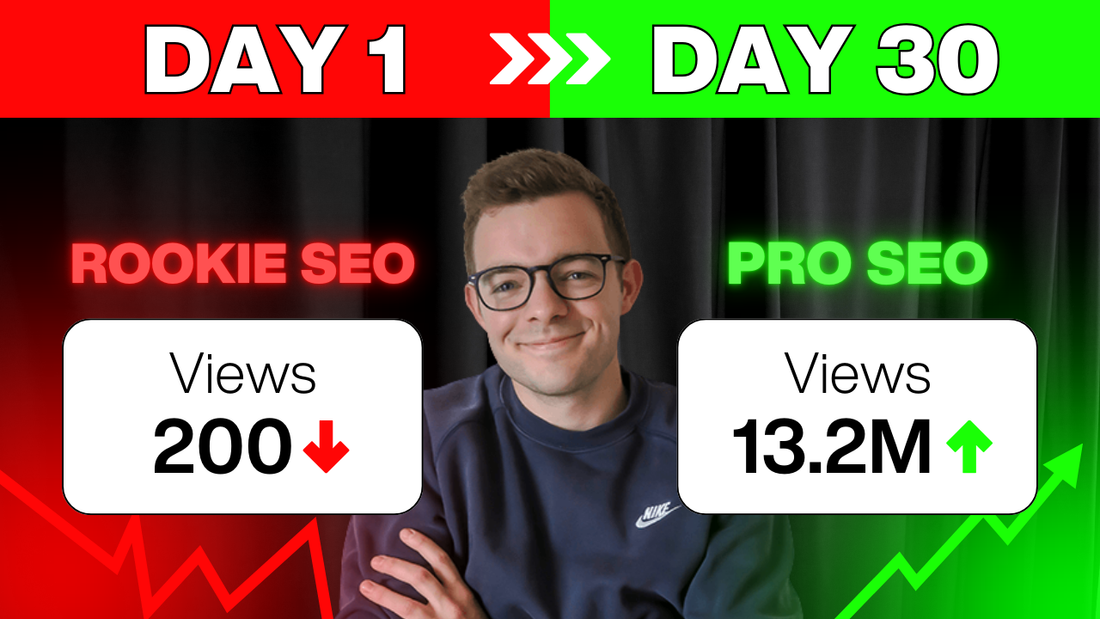You can also listen on:
Apple Podcasts / Spotify
Investigate the intersection of SEO (Search Engine Optimisation) and CRO (Conversion Rate Optimisation). These two disciplines often operate in silos, but when combined effectively, they can significantly enhance your eCommerce success. Here are five key strategies to ensure your SEO and CRO efforts work in harmony.
1. A/B Test Your SEO Changes
One of the most common pitfalls in SEO is implementing changes without measuring their impact on conversion rates. For instance, adding long-form content to collection pages might boost organic rankings but could also clutter the user experience and lower conversions.
To avoid this, conduct A/B tests when rolling out major SEO changes. If you're adding extensive descriptions to collection pages, test whether placing them at the top or bottom affects user engagement and sales. Testing variations can help strike the right balance between SEO gains and a smooth user experience that maximises conversions.
2. Rethink Your Blog Strategy
Many brands maintain a blog but struggle to see tangible benefits from it. If your blog content isn’t driving conversions or ranking well in search engines, it's time to reassess its purpose.
Instead of churning out posts for SEO alone, consider using blogs for:
Email marketing: Share valuable insights with your audience via newsletters.
Supporting product pages: Link blogs to product pages to provide in-depth information.
Content for PPC campaigns: If your blog posts perform well in paid search, leverage them for audience engagement.
If you’re unsure about your blog’s effectiveness, pause content production for a few weeks and analyse past performance. Are blog readers converting? If not, explore alternative content strategies.
3. Use CRO Data to Inform Site Navigation
Site navigation plays a crucial role in both SEO and CRO. The way users interact with your site’s menu can directly influence both search visibility and sales.
A case study with a fashion brand revealed that while SEO data suggested categorising dresses by occasion (e.g., ‘Wedding Guest Dresses’), CRO data showed that users preferred filtering by style (e.g., ‘Maxi Dresses’, ‘Cocktail Dresses’). By adjusting the navigation based on actual user behaviour, we significantly improved both search rankings and conversion rates.
To optimise navigation, leverage heatmaps and session recordings from tools like Microsoft Clarity. Observe how users engage with different menu options and refine your structure accordingly.
4. Improve Page Speed for Better SEO and CRO
Page speed is a silent conversion killer. A slow site can frustrate users, leading to higher bounce rates and lower sales. Additionally, Google prioritises fast-loading pages in search rankings.
To optimise speed:
Audit your apps: Shopify stores often suffer from excessive apps that slow down performance. Run AB tests by disabling non-essential apps and monitoring their impact on conversion rates.
Optimise images and scripts: Compress images, minify code, and implement lazy loading where appropriate.
Use a lightweight theme: If your store is sluggish, consider switching to a faster, well-optimised theme.
By improving page speed, you create a smoother experience for users while boosting SEO rankings.
5. Analyse User Behaviour to Refine Internal Linking
Internal linking is crucial for both SEO and usability. However, many brands structure links without considering user behaviour.
By using session tracking tools, you can:
Identify ‘dead clicks’ (users clicking on non-clickable elements, like text they assume is a button).
Spot ‘rage clicks’ (frustrated users repeatedly clicking an unresponsive element).
Understand navigation flows (where users go after adding items to their cart).
For example, if users frequently click on ‘Delivery Information’ expecting a detailed page but find only a brief note, consider expanding it or linking to a dedicated shipping policy page. This improves user satisfaction while strengthening internal SEO structure.
Final Thoughts
SEO and CRO should never operate in isolation. A well-optimised site doesn’t just attract traffic—it converts visitors into customers. By integrating AB testing, refining blog strategy, optimising navigation, improving page speed, and analysing user behaviour, you can create a seamless experience that drives both organic growth and sales.
Check out the full podcast episode here.
This episode was brought to you by Nick Trueman, Director of PPC & SEO Agency, Spec Digital.

